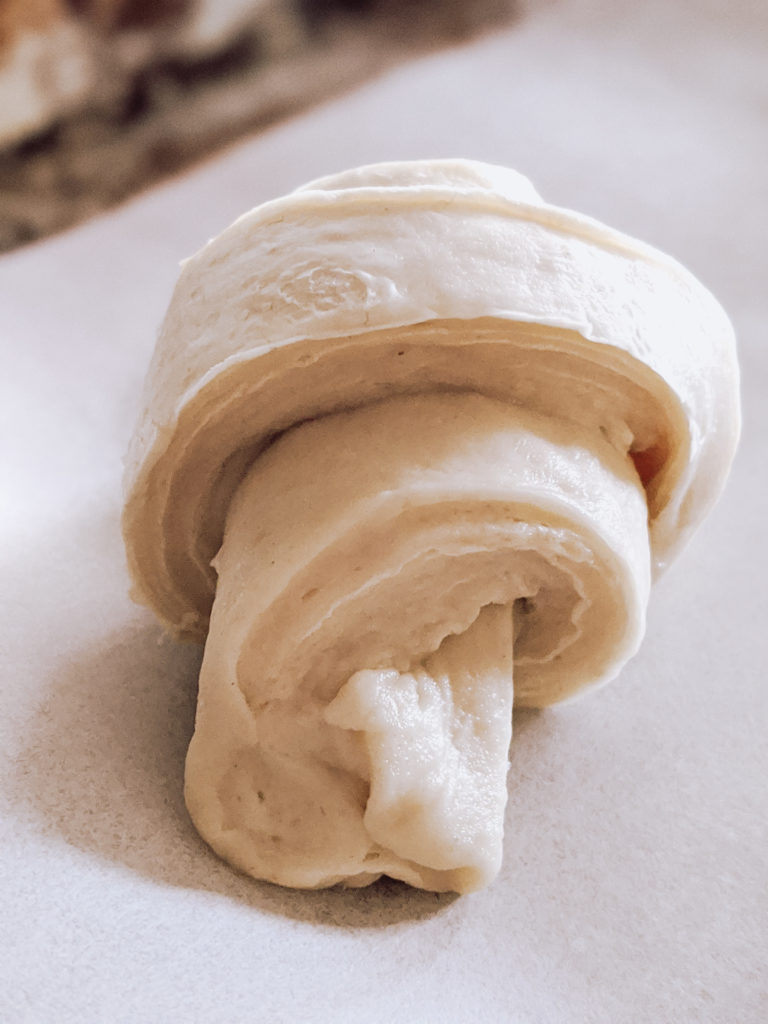Seeing as how I have not yet mastered basic sourdough bread, the next logical step on this journey would be to try and make the most difficult sourdough pastry I could possibly think of, right?
I’ve been feeling pretty bread-ed out lately and needed a change… In comes my hankering for a croissant. It’s been about 7 years since I’ve had a croissant. I absolutely loved them – warm and flakey, topped with a bit of raspberry jam – but have not yet been able to find a vegan version during these 7 years (red flag #1). So I thought, seeing as though I’m already tackling some difficult baking, might as well add that challenge to the list and make some vegan sourdough croissants! While I 100% understand that I’m setting myself up for failure, the experimentation and challenge of this task is too good to pass up.
Recipe
The search for a vegan sourdough croissant recipe came up with next to no results (red flag #2), but I stumbled upon one gem of a recipe on a vegan baking subreddit that looked promising. I cut the recipe in half (the measurements I used are listed in the recipe below) and made one half batch with my whole-wheat starter, and one with my all-purpose starter, following the exact same measurements and methods for both.
- 210g AP flour
- 5g salt
- 25g sugar
- 70g sourdough starter
- 60g alternative milk
- 60g warm water
- 25g + 100g vegan butter
Thinly slice 100g of butter and put it in the freezer.
Mix the dry ingredients together in a bowl.
Add the milk, water, and starter. Once mixed to a rough dough, knead for about 5 mins.
Add in 25g of butter, kneading for another 5 mins until incorporated.
Put dough in a bowl, cover and allow to rise for 2-3 hours at room temperature.
Roll the chilled dough into a rectangle, so that it about 1 cm thick.
Place frozen butter over 2/3 of the dough.
Fold the empty third over the middle. Fold another third on top of that. The stack will now be dough/butter/dough/butter/dough.
On a gently floured surface, roll stack into a rectangle about 1cm thick.
Fold the two ends towards the middle (but not overlapping). Fold in half the other way.
Wrap in saran wrap and refrigerate for 30 minutes.
Roll out chilled dough again to about 1cm thick. fold in thirds again.
Re wrap in saran and refrigerate for 1 hour.
Roll out chilled dough to 1cm thick. Cut out triangles, about 10 cm at the base and 2cm at the sides.
Gently stretch out the base of the triangle. Roll the dough, starting at the flat end of the base to the tip of the triangle. Repeat for all the triangles.
Place the croissants on a tray lined with parchment paper or a silpat mat. Place them so that the tip is on the bottom of the pastry.
Proof the croissants for 2-3 hours. In the final hour, preheat oven to 425 F.
Bake for 10 minutes at 425F, then reduce to 400F for 18 minutes.
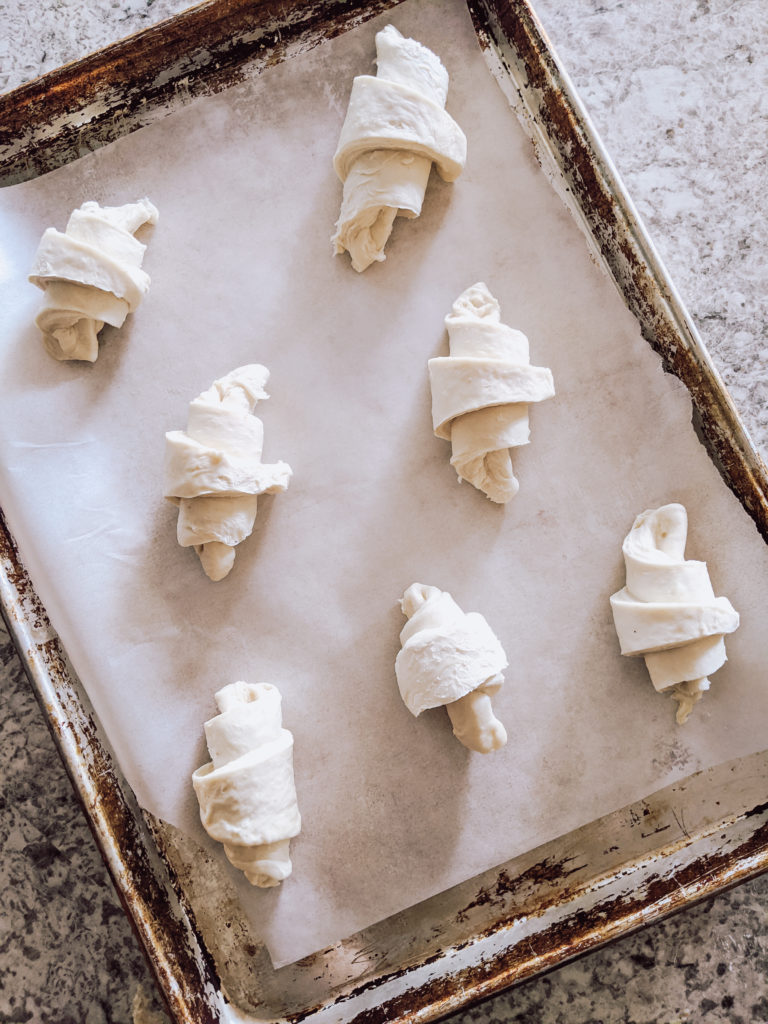
Thoughts
The recipe, although a lot of steps, was simple and easy to follow. I was very pleasantly surprised at how good the laminated dough looked after
I rolled the croissants. I honestly didn’t think I’d get that clean of layers while I was making it. The vegan butter seems to have a higher water content and melts a bit easier than regular butter, so I was worried the melting/temperature would negatively impact the lamination process.
The Results
I CANNOT CONTAIN MY EXCITEMENT – They worked!!! I really truly can’t believe the beautiful croissants that came out of this experiment of a bake.
Whole -Wheat
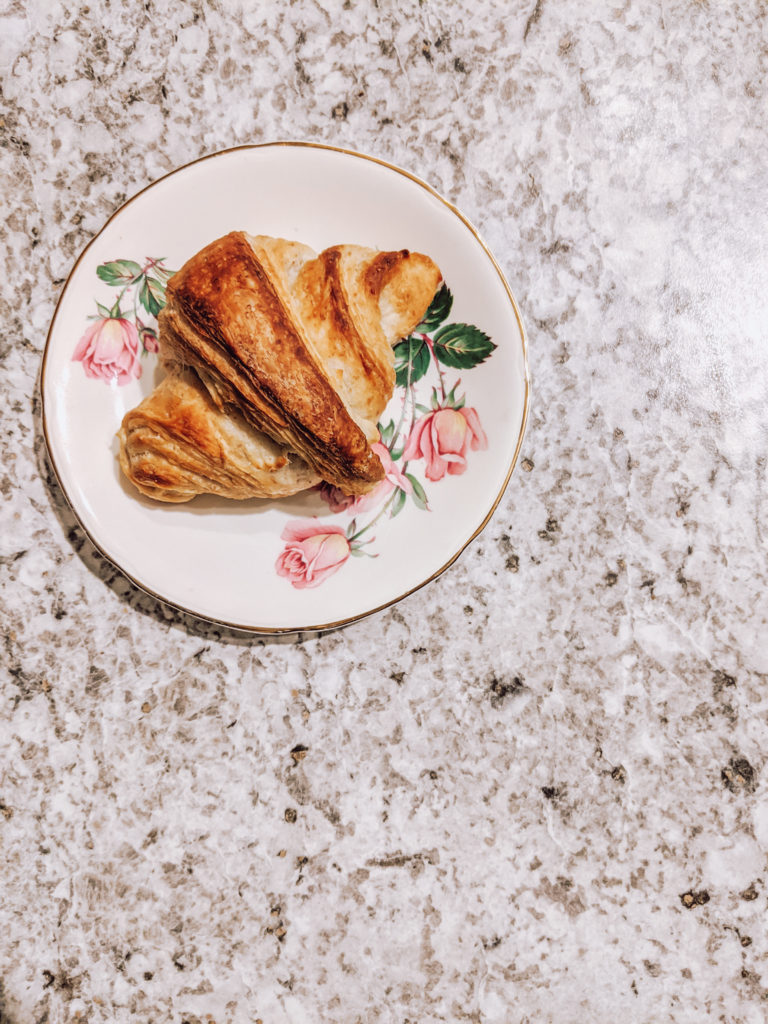
Surprisingly, this batch rose a tad less during proofing, so I was nervous about how the sourdough was doing in there, but the oven spring really picked up the slack.
As far as flavour goes, the whole-wheat starter really shone through. The tang of the sourdough was subtle, but it was accompanied by a really beautiful nutty flavour, which my husband and I both thought was a great addition to the plain, buttery croissant taste.
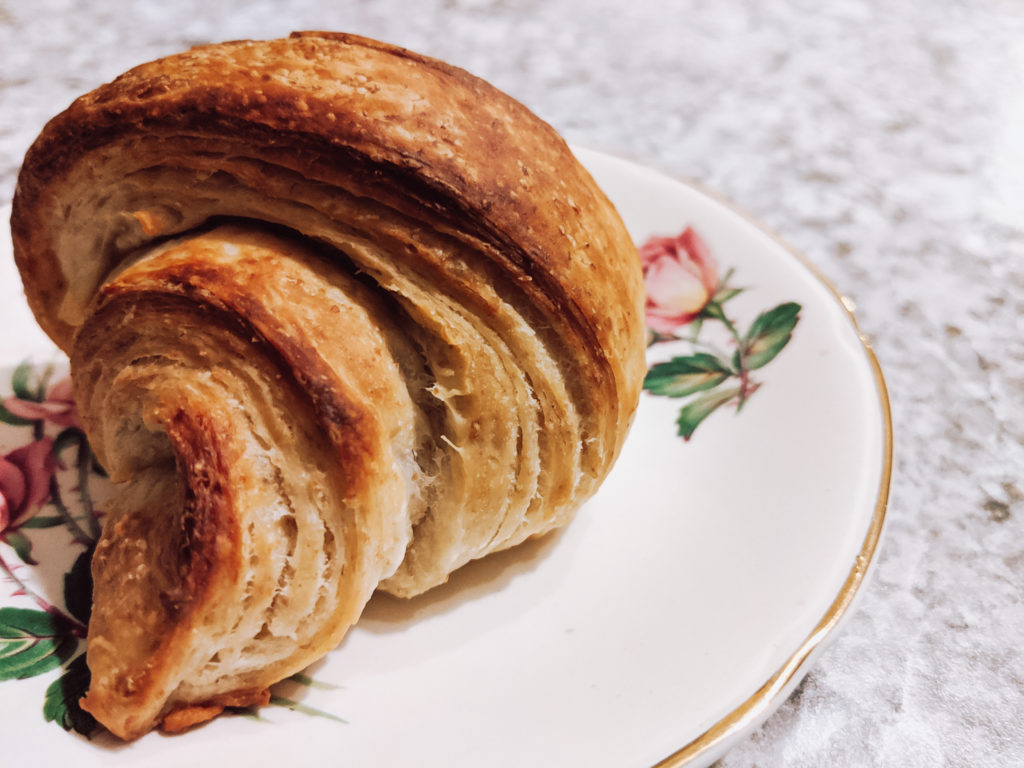
White/All-Purpose
During the entire process, the dough of this batch was a bit easier to work with. After cutting and rolling, the lamination also appeared to be more prominently displayed. The rise during proofing was perfect – I definitely had more more confidence that this batch would turn out better because the starter seemed to give it more rise.
The sourdough flavour in this batch was more true and more pronounced without being too sour (which I wouldn’t want in a croissant.

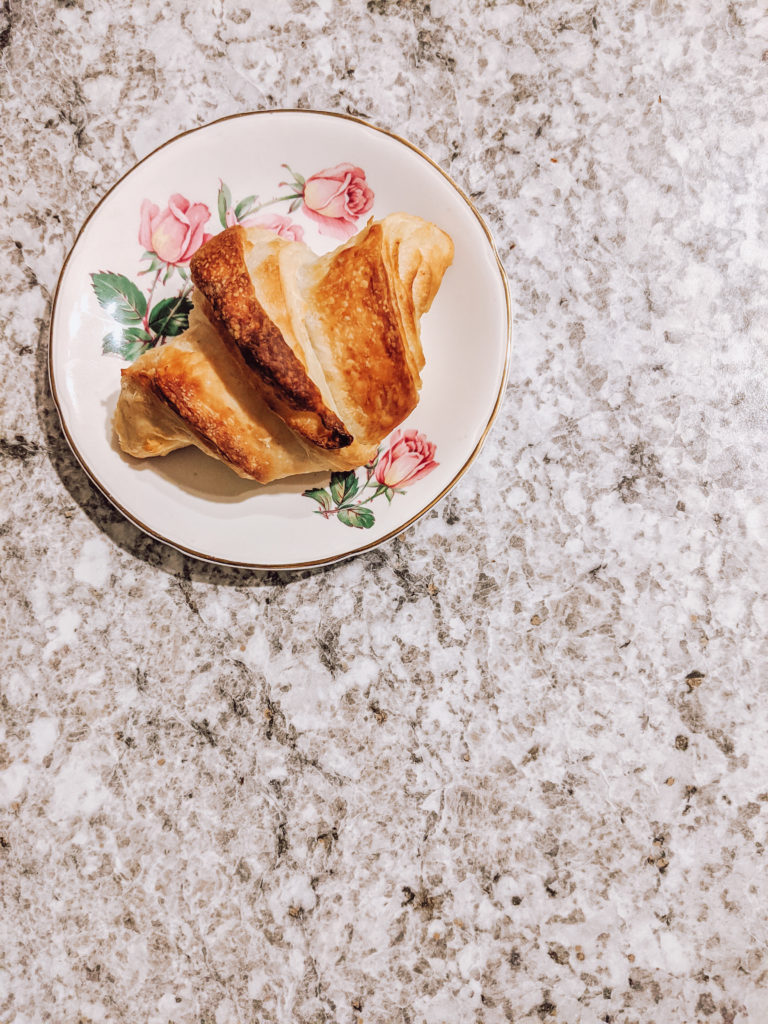
I am still in shock at how this bake turned out, happy and intrigued with the specific sourdough flavours that came through in each batch, and so inspired to make more croissants!
